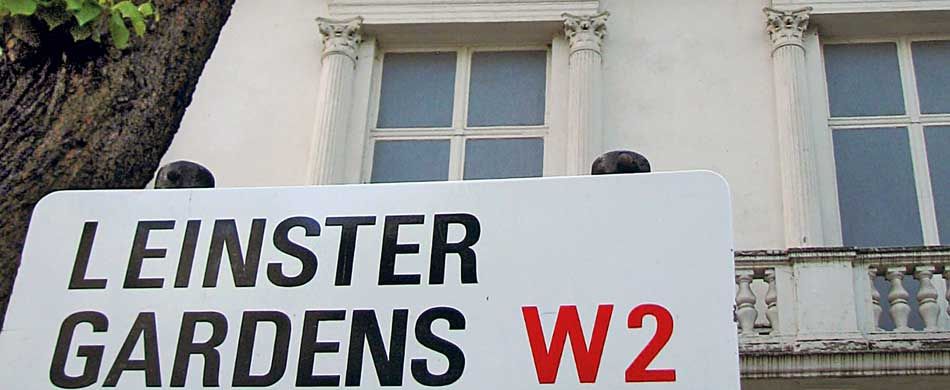I HAVE just returned from London where I managed to harvest a number of interviews for this magazine’s God & I column. London is one of my favorite cities, and every time I go there I always manage to see something new. This time I discovered ‘The Houses That Never Were.’ These are houses that have no door bells or letter boxes. Nobody visits. Nobody sits on their balconies. Probably millions of people have walked by them without ever noticing anything strange. They are, in fact, fake houses cemented on a brick wall.
When the London Underground was being constructed in the 1860s, rather than tunneling under existing buildings, tunnels were dug right through the city and then covered over again. But not all of the properties razed to the ground to make way for the railway were rebuilt. This is the case for the houses at 23 and 24 Leinster Gardens which were demolished to build the tunnel connecting Paddington with Bayswater. The Underground uses this open-topped portion of the line to ventilate a large section of the surrounding Tube System, but the sacrificed houses were never reconstructed. This left a rather unsightly hole in an otherwise very sightly block of the Empire, five-story houses. And so a false façade was constructed to conceal the wound.
The beautiful façade matches its neighbors in every important detail, except that the windows are painted on rather than being made of glass. They did a really nice job, and I would surely never have noticed that they were fake had the person accompanying me to one of the interviews not made me aware of it. I am quite sure that even many people who actually live in that neighborhood have believed for years that those houses were real. From the back of the block one can see the real situation: the houses on either side are braced against each other by a number of sturdy metal girders, and the Underground tracks are visible just below them.
Yes, appearances can indeed be deceiving. The house you purchased may have looked perfect when you first walked in, but over time you discovered hidden defects that cost you a lot of money to fix. Maybe it was that used car you bought from a friend that turned out to be a lemon. This is not to mention all the stories we have heard about art forgeries, counterfeit designer-clothes, bags and watches. We have even read stories about people who passed themselves off as one thing, only to be exposed as frauds later on.
This last phenomenon is unfortunately all-too frequent in our modern world. People wanting to look successful, caring, passionate, perhaps even pious, later have proved to be just the opposite. This is not, however, just a modern occurrence. It has always been this way, and in John’s Gospel Jesus gives us this golden piece of advice, “Stop judging by mere appearances, but instead judge correctly” (John 7:24).
Yet to judge others according to appearances is one of the things we like doing best because it is the easiest thing to do. We save time and effort in this way. To really get to know a person well it is not enough to just meet them once or twice. We need to spend a considerable amount of time with them to let events reveal their true nature and thus not rely only on our own impressions which are often biased by our shallow personal preferences and prejudices.
The Lenten period that has just begun is a good time to initiate a new way of relating to people that is not based on appearances, but on mercy and generosity.
In our lives we may meet people who look very impressive, but are actually inwardly empty. On the other hand we may meet others who look very unimpressive, but are actually among those who can change the world for the better. So we should determine today to judge first ourselves and then everybody else we know not by external appearances, but by the heart, just as God does: “for the Lord does not see as man sees; for man looks at the outward appearance, but the Lord looks at the heart” (1 Samuel 16:7).




